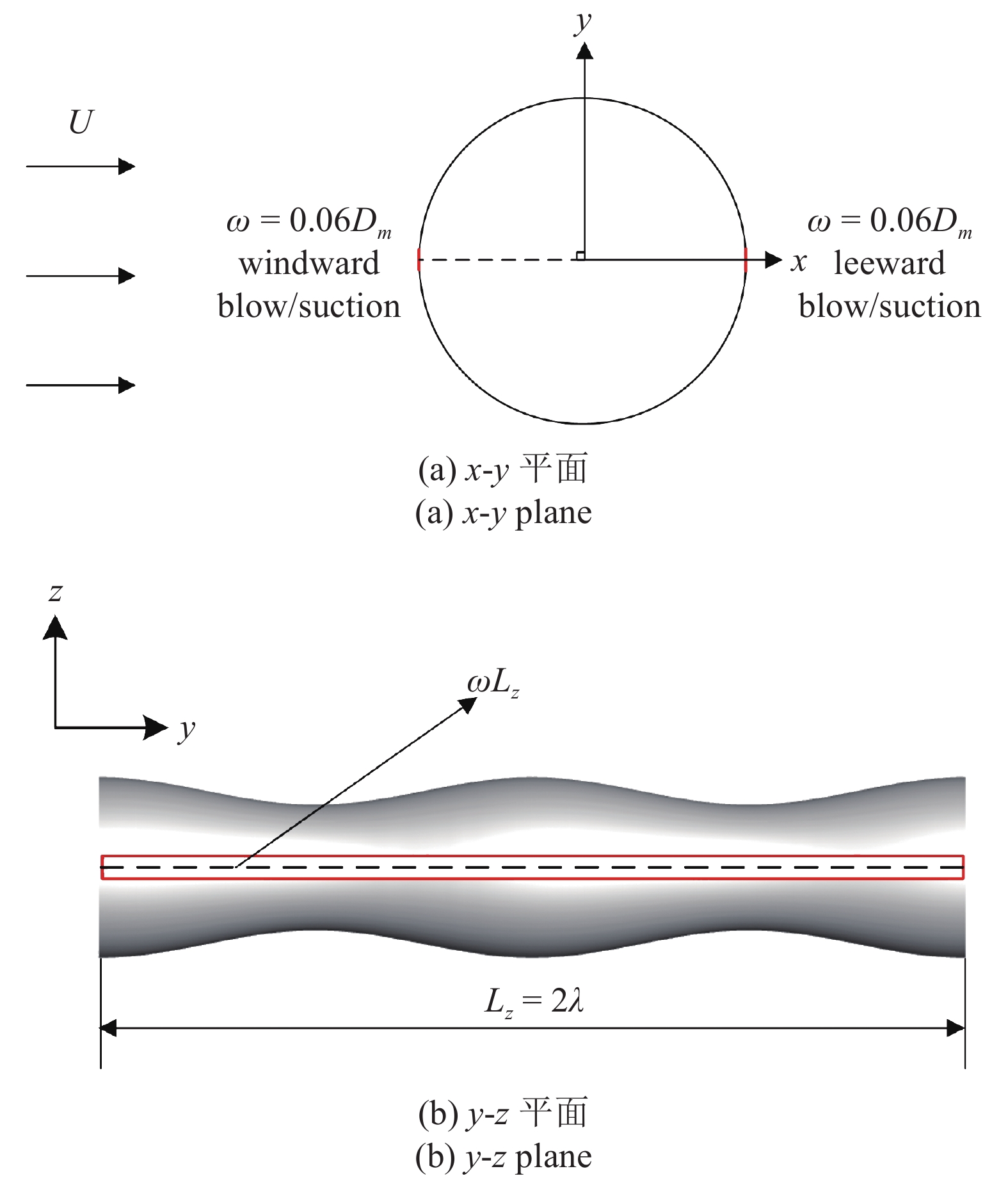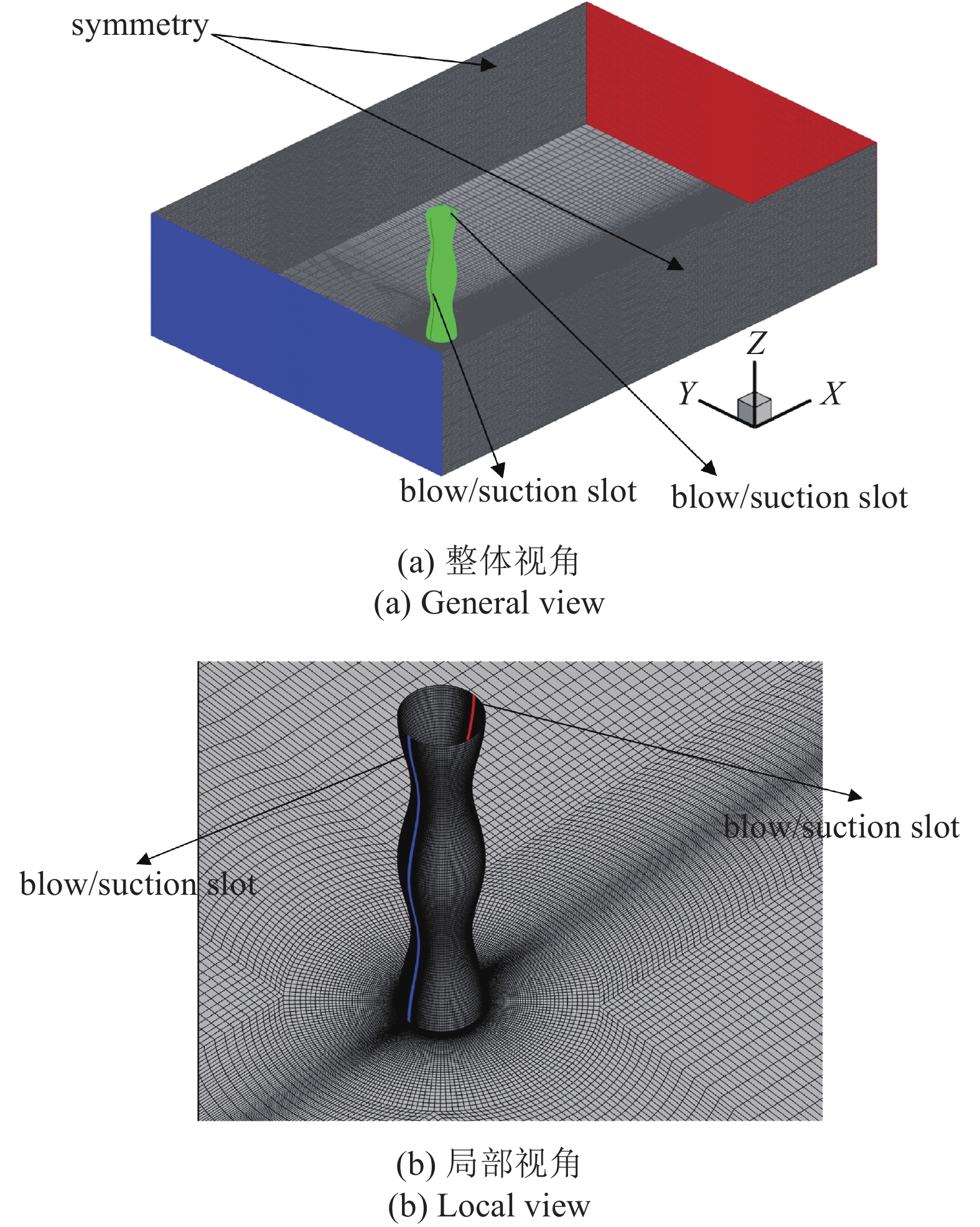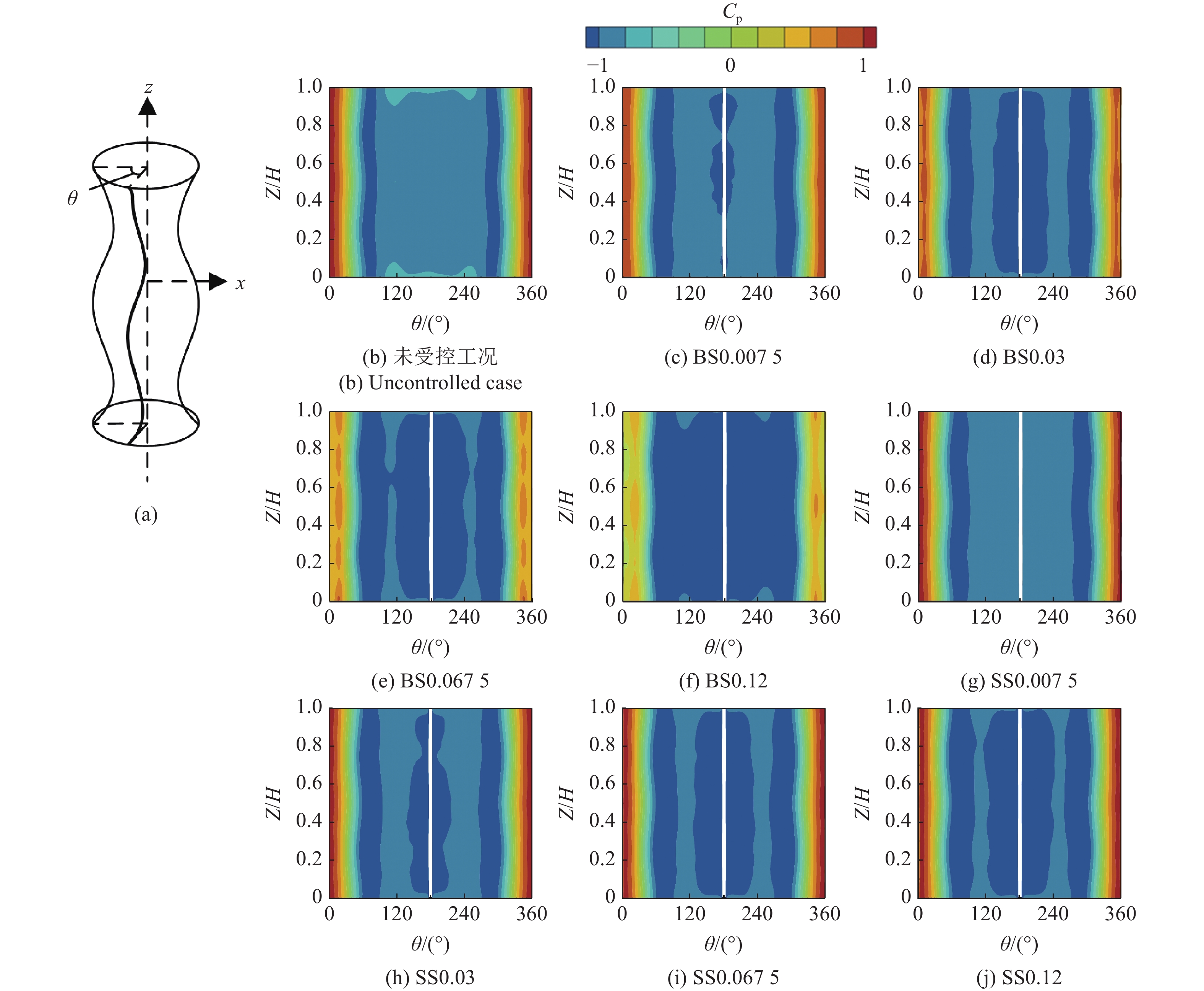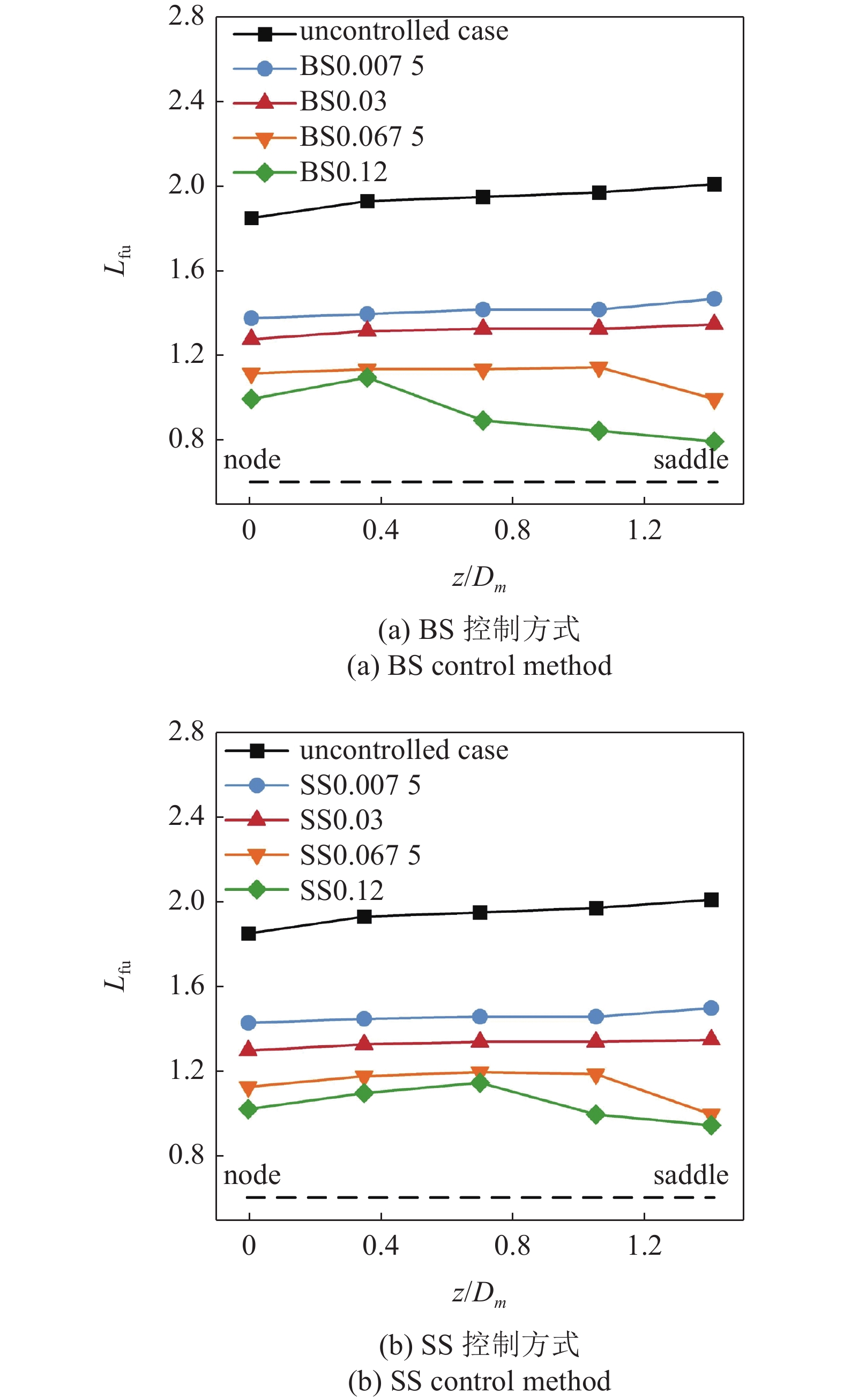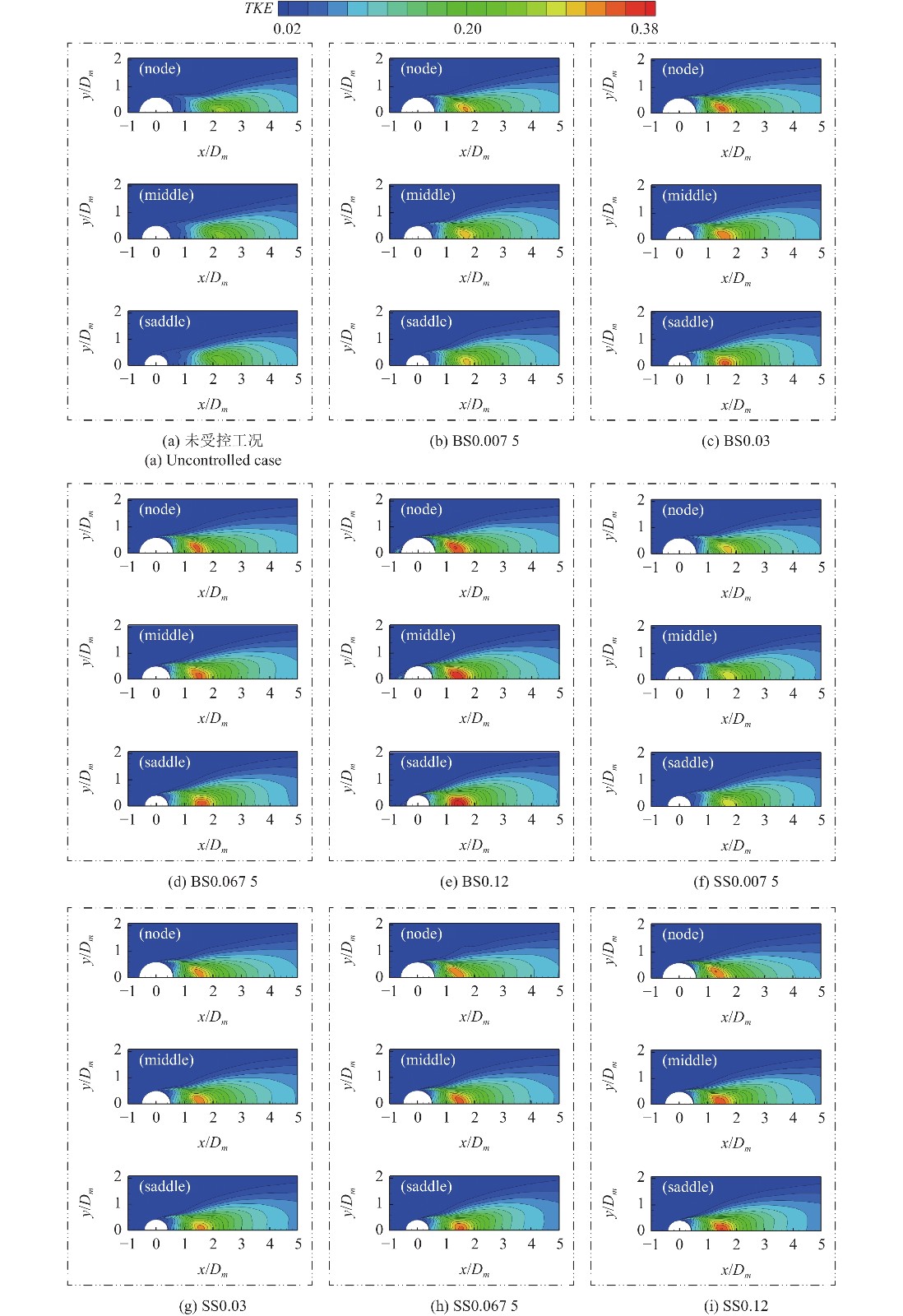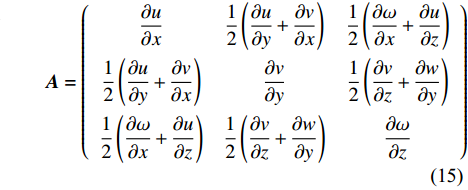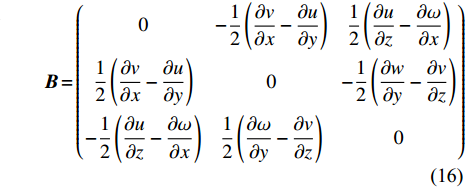ACTIVE FLOW CONTROL OF WAVY CYLINDER BASED ON STEADY BLOWING AND SUCTION
-
摘要: 基于定常吹吸气对波浪型圆柱近尾迹流动进行控制以增强柱体振动, 采用大涡模拟研究了亚临界雷诺数(Re = 3000)下前吹后吸和前后吸气控制方式在不同吹吸气工况对波浪型圆柱升阻力特性、时均压力系数、环量、湍动能及近尾迹流动结构的影响. 研究发现: 前吹后吸和前后吸气控制下波浪型圆柱在不同吹吸气动量系数工况脉动升力系数均显著提高, 最大较未受控直圆柱和波浪型圆柱分别提升高达636%和391%, 这主要可能归因于吹吸气控制使波浪型圆柱回流区变短, 高强度涡集中向钝体后方靠拢, 旋涡形成长度缩短, 展向涡流与顺流向涡流相互作用在波浪型圆柱下游形成的“肋状涡”变大变长, 近尾迹环量显著增大, 从而导致脉动升力系数增大, 这可能将诱导柱体产生更强的振动; 同时两种控制方式均改变了波浪型圆柱表面的压力分布, 由于在波浪型圆柱前驻点吹气使前端趋于流线型, 前吹后吸在不同吹吸气动量系数下波浪型圆柱的高压区减小, 但在后驻点吸气使得低压区增大, 而前后吸气在不同吹吸气动量系数下波浪型圆柱的高压区基本不变, 低压区增大. 研究结果可为低风速地区分布式风力俘能结构俘能效率提升提供基础理论支持.Abstract: Based on the control of the near wake flow of a wavy cylinder by steady blowing and suction to enhance the vibration of the cylinder, the effects of the forward blowing and backward suction and the forward and backward suction control modes on the lift and drag characteristics, time-average pressure coefficient, circulation, turbulent kinetic energy and flow field mechanism of a wavy cylinder under different blowing and suction conditions at subcritical Reynolds number (Re = 3000) were numerically studied by large eddy simulation. It is found that the fluctuating lift coefficient of wavy cylinder under the control of forward blowing and backward suction and forward and backward suction is significantly increased under different conditions of blowing and suction momentum coefficient, and the maximum increase is as high as 636% and 391% respectively compared with that of uncontrolled cylinder and wavy cylinder. This may be mainly attributed to the shorter recirculation area of wavy cylinder under the control of blowing and suction, the concentration of high-intensity vortices towards the rear of blunt body, and the shorter vortex formation length, The "riblike vortex" formed by the interaction of spanwise vortex and streamwise vortex becomes larger and longer, and the normalized circulation near the wake increases significantly, resulting in the increase of fluctuating lift coefficient, which may lead to stronger vibration of the cylinder; At the same time, both control methods change the pressure distribution on the surface of the wavy cylinder. Because the front end tends to be streamlined due to the blowing at the front stagnation point of the wavy cylinder, the high-pressure area of the wavy cylinder decreases under different blowing and suction momentum coefficients, but the low-pressure area increases due to the suction at the rear stagnation point, while the high-pressure area of the wavy cylinder is basically unchanged and the low-pressure area increases under different blowing and suction momentum coefficients. The research results can provide basic theoretical support for improving the efficiency of distributed wind energy capture structure in low wind speed areas.
-
引 言
当前化石能源短缺问题日趋严重, 风能作为一种新型绿色能源有着广阔的应用前景[1-2]. 对于风能的获取, 相较于传统大型风力发电机通常放置在沿海、近海和其他高风速地区, 如无叶片风机[3]、MEMS风力俘能装置[4]等发电设备利用涡激振动进行发电, 可进行小型化设计并可用于低风速地区, 适合作为无线传感器网络系统的能源利用和郊区、农村环境以及远离电网系统的偏远地区的小型电力系统[5], 如何诱导更激烈的振动响应是提升风能利用效率的关键.
国内外学者针对圆柱近尾迹流动进行控制来达到减振或者增振的目的, 流动控制方式主要分为被动控制和主动控制[6], 被动控制主要通过改变表面形状或者在钝体周围安装附加装置来干扰剪切层分离来达到控制效果, 由于不需要能量输入, 应用较为广泛, 如分离盘[7]、螺旋列板[8]、附属柱体[9]等. 近年来学者亦通过改变圆柱表面形状来影响圆柱周围的流动结构, Lam等[10]在Re = 100针对λ/Dm = 1 ~ 10, a/Dm = 0.05 ~ 0.25一系列不同波幅和波长的波浪型圆柱进行研究, 得出波长和波幅两个参数对升阻力系数的影响规律, 随后Bai等[11-13]和Lin等[14]在Re = 3000通过数值模拟和PIV实验系统分析了波长对波浪型圆柱流动特性的影响, 研究发现λ/Dm = 6.06的波浪型圆柱Node截面流动分离较早, 产生的额外流向涡附着到柱体表面起到稳定剪切层作用, 在波浪型圆柱下游出现“夹状涡”, 平均阻力系数较直圆柱降低了93%; Zhang等[15]研究波浪型圆柱的涡特征发现Node截面和Saddle截面之间的流场分布存在强烈的三维效应, 波浪型圆柱后流场出现“肋状涡”; 赵桂欣等[16]通过对12种单自由端波浪型圆柱进行大涡模拟发现大多数组合能降低平均阻力系数, 但在特定波长, 脉动升力系数较直圆柱有所增加; 吴应湘等[17]通过对波动柱进行实验和数值仿真发现雷诺数从100 ~ 10000变化时, 波动柱的平均阻力系数随着波动强度的增大而增大, 而脉动升力系数则是先减小再增大, 并且在更高折合流速下振幅相较于直圆柱显著增大. 由此可见, 特定波浪型圆柱的脉动升力系数较直圆柱可能有所提升.
吹吸气作为一种主动控制方式对流动分离有着显著的控制效果[18-19], 国内外学者通常针对圆柱进行减阻减振控制, Chen等[20-21]通过实验和数值模拟在圆柱分离点沿展向布置有限数量吸气孔, 在特定间距布置时发现相邻孔之间产生一对反向旋转的三维涡, 平均阻力系数和脉动升力系数较未受控时降低, 并且实验表明吹吸气速度与来流速度之比小于1控制效果较好, Kim等[22]采用分布力控制方法在圆柱分离点施加沿展向正弦变化的定常吹吸气, 发现分布力同相位时能够有效减小圆柱阻力, Feng等[23-24]发现通过在圆柱前后驻点沿展向狭缝进行吹吸气能起到虚拟气动外形作用, 并与圆柱剪切层相互作用能诱导新的尾涡模式, 圆柱下游尾流旋涡由交替脱落模式变成对称脱落模式; 在增振方面, Mei等[25]发现当在圆柱分离点吹气和前驻点吸气时, 圆柱的阻力和升力系数波动幅度分别增加了785.71%和139.62%, 陈文礼等[26]在Re = 300下在圆柱前后驻点处进行4种组合的定常吹吸气, 发现前后吸气和前吹气后吸气时圆柱的脉动升力系数显著增加. 由此可见, 圆柱控制效果受吹吸气方式、方位角和吹吸气动量系数影响, 在特定吹吸气工况下能显著增强圆柱的脉动升力, 从而诱导更强烈的振动.
综上所述, 前人的研究发现改变柱体表面形状、定常吹吸气等控制方法对圆柱无论是增振还是减振都有着较好的控制效果, 而波浪型圆柱由于表面形状影响, 流动结构较圆柱发生改变, 吹吸气控制方式对波浪型圆柱的近尾迹流动控制效果尚不清楚. 本文设计在波浪型圆柱前后驻点处沿展向狭缝进行定常吹吸气, 采用大涡模拟在亚临界雷诺数(Re = 3000)下研究前吹气后吸气和前后吸气在不同吹吸气动量系数下对波浪型圆柱流动结构的影响, 揭示定常吹吸气作用在波浪型圆柱的流动控制机理, 为低风速地区分布式风力俘能结构俘能效率的提升提供有益探索.
1. 数值方法
1.1 控制方程
大涡模拟(large eddy simulation, LES)采用空间滤波技术[27], 通过截止尺度和滤波函数将涡识别为大尺度涡和小尺度涡, 在数值模拟中直接解析大尺度涡, 小尺度涡对大尺度涡的影响则通过亚格子尺度应力模型(subgrid scale stress, SGS)封闭求解, 经滤波函数处理后的不可压缩的Navier-Stokes方程为
$$ \frac{{\partial {{\bar u}_i}}}{{\partial {x_i}}} = 0 $$ (1) $$ \frac{{\partial {{\bar u}_i}}}{{\partial t}} + \frac{{\partial {{\bar u}_i}{{\bar u}_j}}}{{\partial {x_j}}} = - \frac{1}{\rho }\frac{{\partial \bar p}}{{\partial {x_i}}} + \nu \frac{{{\partial ^2}{{\bar u}_i}}}{{\partial {x_j}\partial {x_j}}} - \frac{{\partial {\tau _{ij}}}}{{\partial {x_j}}} $$ (2) 式中, xi, yi为笛卡尔坐标; i, j = x, y, z; ui, uj为滤波后的速度;
$\overline p $ 为滤波后的压力; τij为亚格子尺度应力; ρ和ν分别表示流体介质的密度和运动黏度.为使计算方程封闭, 采用Smagorinsky-Lilly 亚格子模型[28]计算亚格子应力τij
$$\qquad\qquad {\tau _{ij}} - \frac{1}{3}{\tau _{kk}}{\delta _{ij}} = - 2{\nu _{{\rm{sgs}}}}{\bar S_{ij}} $$ (3) $$ \qquad\qquad{\bar S_{ij}} = \frac{1}{2}\left( {\frac{{\partial {{\bar u}_i}}}{{\partial {x_j}}} + \frac{{\partial {{\bar u}_i}}}{{\partial {x_i}}}} \right) $$ (4) 式中, δij表示Kronecker增量, τkk是SGS应力的各向同性部分, νsgs表示SGS涡流黏度,
$\overline {{S_{ij}}} $ 表示解析场中的应变张量$$\qquad\qquad\qquad {\nu _{{\text{sgs}}}} = {\left( {{C_{\rm{s}}}\varDelta } \right)^2}|\bar S| $$ (5) $$ \qquad\qquad\qquad|\bar S| = \sqrt {2{{\bar S}_{ij}}{{\bar S}_{ij}}} $$ (6) $$\qquad\qquad\qquad \varDelta = {V^{\frac{1}{3}}} $$ (7) 式中,
$\varDelta $ 表示过滤的网格尺度, Cs为Smagorinsky常数, 研究者发现广泛的流动中Cs = 0.1 ~ 0.14可以取得较好的数值仿真结果, 本文取0.1[29].1.2 控制方程离散
本文计算控制方程离散均采用有限体积法, 所有仿真使用双精度计算, 压力−速度耦合采用PISO算法, 动量离散采用二阶中心差分格式, 时间离散采用二阶隐式格式[29].
2. 计算模型及网格
2.1 模型简介
未受控波浪型圆柱如图1所示, 其几何表达式为
$$\qquad\qquad {D_z} = {D_m} + 2a \cos \frac{{2{\text{π}} z}}{\lambda } $$ (8) $$\qquad\qquad {D}_{m} = ({D}_{\mathrm{max}} + {D}_{{\rm{min}}})/2 $$ (9) 式中, Dz表示波浪型圆柱对应高度z上的直径, Dm = 0.01 m表示波浪型圆柱的平均直径, Dmax为波浪型圆柱最大直径, Dmin为波浪型圆柱最小直径, Node代表波浪型圆柱的最大截面, Saddle代表波浪型圆柱的最小截面, Middle代表波浪型圆柱Node与Saddle之间的中间截面, Lz为波浪型圆柱展向高度, a和λ分别表示波浪型圆柱的幅值与波长. Lam等[29]指出a/Dm = 0.091, λ/Dm = 2.818的波浪型圆柱近尾迹混乱无序、不稳定, 受到外部扰动可能会增强脉动升力, 故选取该参数波浪型圆柱作为研究对象.
2.2 计算域及网格划分
参考Lam等[29]计算域大小和边界条件设置, 本次仿真的计算域大小为24Dm × 18Dm × 5.636 Dm. X轴正方向为顺流向, Y轴为横流向, Z轴为波浪型圆柱展向, 笛卡尔坐标系圆心位于波浪型圆柱中心. 上游入口处边界距离波浪型圆柱中心为8Dm, 下游出口处边界距离波浪型圆柱中心为16Dm, 展向高度为2λ. 入口采用速度入口(velocity-inlet), 来流速度U∞ = 4.3822 m/s, 出口采用压力出口(pressure-outlet), 背压设置为0 Pa, 计算域两个侧面采用对称边界条件(symmetry), 波浪型圆柱沿展向设置周期性边界条件, 波浪型圆柱表面设置为无滑移壁面(no-slip-wall). 流体介质为空气, 密度ρ为1.225 kg/m3, 运动黏性系数ν为1.7894 × 10−5 m2/s. 无量纲时间步长∆t* = U∞∆t/Dm, U∞为来流速度, ∆t为时间步长, 本次大涡模拟计算中, 取∆t* = 0.005, 计算出库朗数约为0.833, 满足CFL条件.
本文使用ICEM对计算域进行结构化网格划分, 利用O-block技术对圆柱周围加密, 避免了片状低质量网格的生成. 大涡模拟对于边界层的要求控制y+ ≤ 1, 对圆柱周围进行3Dm × 3Dm指数形式增长的区域加密, 计算域及其网格划分如图2所示.
2.3 计算模型验证
本文首先验证未受控波浪型圆柱计算模型, 探究展向高度Lz、无量纲时间步长∆t*、网格参数(波浪型圆柱周向节点数N, 第一层边界层高度∆y)对圆柱的平均阻力系数(time-average drag coefficient, Cdmean), 脉动升力系数(fluctuating lift coefficient, Clrms)和Strouhal数(St)的影响, 计算结果如表1. 可以看出本文的计算结果与仿真数据(num.)[29]基本一致, 充分验证了数值方法与网格划分的准确性, 综合考虑计算精度与速度, 选取Case2作为其他受控工况下的数值模拟.
表 1 Re = 3000下波浪型圆柱的网格独立性验证和周期性边界条件验证Table 1. Grid independence test and the periodic boundary condition validation for the wavy cylinder at Re = 3000Case Gird number Δy/D Lz N Δt* Re Cdmean Clrms St Case1 1 397 360 0.003 2λ 120 0.005 3000 1.132 0.107 0.220 Case2 2 305 368 0.003 2λ 160 0.005 3000 1.028 0.0757 0.210 Case3 3 345 453 0.003 2λ 180 0.005 3000 1.026 0.0754 0.209 Case4 2 466 920 0.0015 2λ 160 0.005 3000 1.027 0.755 0.210 Case5 2 209 560 0.006 2λ 160 0.005 3000 1.114 0.099 0.217 Case6 2 305 368 0.003 2λ 160 0.05 3000 1.158 0.1 0.215 Case7 2 305 368 0.003 2λ 160 0.0005 3000 1.024 0.0756 0.210 Case8 3 448 200 0.003 3λ 160 0.0005 3000 1.028 0.0753 0.210 Ref. [29] — — — — — 3000 1.035 0.076 0.210 为了验证周期性边界条件, 取Lz = 3λ的波浪型圆柱在相同网格参数和无量纲时间步长∆t*下进行大涡模拟, 发现Case8中Lz = 3λ的波浪型圆柱的Cdmean, Clrms和St与Case2中Lz = 2λ的波浪型圆柱基本相同, 因此可以看出Case2中Lz = 2λ的波浪型圆柱足以应用于当前模拟, 此外, 下文将讨论周期性边界条件的其他验证.
受控波浪型圆柱示意图如图3所示, 在波浪型圆柱前后驻点处沿展向狭缝进行定常吹吸气来进行主动控制, 吹吸气动量系数(momentum coefficient, Cμ)定义如下
$$ {C_{\text{µ}} } = 2{\left( {\frac{{{U_{\text{b-s} }}}}{{{U_\infty }}}} \right)^2} {\frac{\omega }{{{D_m}}}} $$ (10) 其中, ω为狭缝宽度, Ub-s为吹吸气速度, Choi等[6]指出为了控制流动的绝对不稳定性通常需要向流场注入与来流速度相当的动量来控制旋涡脱落, 本文参考陈文礼等[26]固定狭缝宽度为ω/Dm = 0.06, 通过改变吹吸气速度来控制动量输入, 用大涡模拟分别计算前吹气后吸气和前后吸气两种控制方式在不同吹吸气动量系数(选Ub-s/U∞ = 0 ~ 1, 增量为0.25, 对应Cμ = 0, 0.0075, 0.03, 0.0675, 0.12)的控制效果, 定常吹吸气狭缝边界条件采用速度入口(velocity-inlet), 改变正负值对应吹吸气, 计算域以及其他边界条件参照验证中的Case2, 网格划分示意图如图4所示.
3. 结果分析
3.1 平均阻力系数和脉动升力系数
图5显示的是前后吸气和前吹后吸两种方案在 Cμ = 0 ~ 0.12, 共四种吹吸气动量系数下的Cdmean和Clrms, 并与未受控的波浪型圆柱和直圆柱(exp.)[30]做对比, 为了表述方便, 前后吸气流动控制方式用符号SS表示, 前吹气后吸气流动控制方式用符号BS表示.
从整体上看, 受控和未受控波浪型圆柱的Cdmean和Clrms均高于直圆柱, 从图5(a)中可以看出, SS下波浪型圆柱的Cdmean随着Cμ的增加而逐渐上升, 当Cμ = 0.12时, Cdmean较未受控波浪型圆柱和直圆柱分别增加约17.8%和21.3%, 而BS下波浪型圆柱的Cdmean随着Cμ的增加整体波动不大, 当Cμ = 0.0075时, Cdmean略低于未受控波浪型圆柱, 当Cμ = 0.12时, Cdmean较未受控波浪型圆柱和直圆柱分别增加约3%和5.9%. 从图5(b)中可以看出, BS和SS下随着Cμ的增加均显著提高了波浪型圆柱的脉动升力系数, BS下随着Cμ的增加波浪型圆柱的Clrms略高于SS, 最大较未受控波浪型圆柱分别增加约391%和341%, 较直圆柱分别增加约636%和562%.
3.2 表面压力系数
表面压力系数(pressure coefficient, Cp)能够直接反映出波浪型圆柱和受控波浪型圆柱的表面受力情况, 为了方便观察表面Cp分布, 将波浪型圆柱的表面沿母线剪开, 并以角度“θ”和高度“Z/H”作为横、纵坐标铺平, 如图6(a)所示, 展开后的表面时均压力系数分布如图6(b)所示, 为了表述方便, SS0.12代表在Cμ = 0.12下进行前后吸气, BS0.12代表在Cμ = 0.12下进行前吹气后吸气, 其他以此类推.
从图6中可以看出整体的Cp分布基本保持对称, BS下随着Cμ的增加, 波浪型圆柱的高压区范围和强度(
$\left\langle {{C_{\rm{p}}}} \right\rangle $ 大于0.6的区域)逐渐减小, 但低压区($\left\langle {{C_{\rm{p}}}} \right\rangle $ 小于−0.6的区域)逐渐增大, 这可能是BS下波浪型圆柱的平均阻力系数整体波动不大的原因; SS下随着Cμ的增加, 波浪型圆柱的高压区范围和强度较未受控时基本没变化, 但低压区逐渐增大, 这可能是SS下波浪型圆柱的平均阻力系数大于未受控波浪型圆柱的原因, 此外, BS下随着Cμ的增加波浪型圆柱的低压区范围变化幅度大于SS. 由此可见, 在前驻点进行吹气能降低高压区的范围和强度, 而吸气则对高压区的影响不大, 在后驻点进行吸气能增大低压区的范围和强度.3.3 旋涡形成长度和最大湍流强度长度
旋涡形成长度(vortex formation length, Lfc)和最大湍流强度长度(maximum turbulence intensity length, Lfu)能够反应波浪型圆柱的流场特性, Lfc定义为尾迹中心线上U/U∞ = 0的点到波浪型圆柱中心的距离, Lfu定义为尾迹中心线上μ′/U∞ 最大值的点到波浪型圆柱中心的距离[31], 其中U和μ′分别为波浪型圆柱的时均顺流向速度和脉动顺流向速度. 图7和图8展示了Re = 3000下SS和BS在Cμ = 0 ~ 0.12下波浪型圆柱展向从Node截面到Saddle截面的Lfc和Lfu, 并与未受控波浪型圆柱作对比.
从图中可以看出, 未受控波浪型圆柱的Lfc从Node截面到Saddle截面增加, Lam等[31]在实验中也观察到类似的结果. SS和BS下波浪型圆柱的Lfc和Lfu随着Cμ的增加而减小, 并且远小于未受控波浪型圆柱, 这表明波浪型圆柱近尾迹存在能量强而集中的旋涡, 直接导致脉动升力显著增大, 此外, SS和BS下波浪型圆柱的Lfu随着Cμ的增加较未受控时趋势发生改变, 当Cμ = 0.12时, Lfu的变化趋势呈倒“V”字形, 此时波浪型圆柱近尾迹的流动结构可能发生改变.
3.4 环量
环量(circulation, Γ)是涡流动力学中的重要物理量, 其表达式为
$$ \varGamma = \iint {_\varSigma \omega {\rm{d}}x{\rm{d}}y} $$ (11) 其中ω代表涡量, 无量纲环量Γ*定义为
$$ {\varGamma ^*} = \frac{\varGamma }{{{U_\infty }{D_m}}} = \frac{{\displaystyle\iint {_\varSigma \omega {\rm{d}}x{\rm{d}}y}}}{{{U_\infty }{D_m}}} $$ (12) 图9和图10分别为Cμ = 0 ~ 0.12下受控波浪型圆柱Node截面和Saddle截面负向涡环量大小, 涡旋结构的提取是基于λci准则[32], λci为速度梯度张量复特征值的虚部. 由于湍流运动的复杂性, 目前尚没有统一的方法来确定涡旋尺度, 根据原理目前涡旋尺度的提取方法大致分为两种, 第一种是将涡核附近流场与模式涡旋拟合, 以拟合涡旋的参数来表征实际涡旋[33], 第二种是使用涡量的等值线来代表涡旋的范围[34], 由于第一种方法得到的并不是真实的涡旋尺度, 本文选取第二种方法.
从图9和图10中可以看出, 未受控波浪型圆柱Node截面和Saddle截面的无量纲环量Γ*分别在x/Dm = 2.68和x/Dm = 2.88处达到峰值, 随着涡旋往下游发展, Γ*开始逐渐减小. BS和SS下波浪型圆柱Node截面和Saddle截面的近尾迹环量Γ*相比于未受控工况显著增大, 且其峰值随着Cμ的增加而增大, 这可能是因为通过在波浪型圆柱后驻点进行吸气使得涡旋集中在波浪型圆柱的后部, 减缓了涡旋的黏性耗散, 使得波浪型圆柱近尾迹涡旋总强度增加, 这可能是两种流动控制方式下波浪型圆柱的脉动升力系数显著增加的主要原因, 此外, 在相同Cμ下, BS下波浪型圆柱的近尾迹无量纲环量Γ*略大于SS.
3.5 湍动能
图11给出了Re = 3000 下SS和BS在Cμ = 0 ~ 0.12下的波浪型圆柱在x-y平面的无量纲湍动能云图, 并与未受控波浪型圆柱作对比.
无量纲湍动能(normalized turbulent kinetic energy, TKE)定义如下
$$ TKE = ({\mu ^{'2}} + {\nu ^{'2}} + {\omega ^{'2}})/(2{U_\infty }^2) $$ (13) 其中μ′, ν′, ω′分别为x, y, z三个方向的脉动速度分量.
从图中可以看出, 与未受控的波浪型圆柱相比, 随着Cμ的增加, BS和SS下波浪型圆柱各个截面的高TKE区域(
$\left\langle {TKE} \right\rangle$ 大于0.26)和TKE最大值显著增加, 这一特征与图7和图8中Lfc和Lfu的缩短相一致, BS在每个Cμ下波浪型圆柱各个截面的高TKE区域和TKE最大值要略大于SS. 未受控波浪型圆柱Node截面的高TKE区域和TKE最大值要大于Middle截面和Saddle截面, 这与Lam等[29]的研究一致. BS和SS下随着Cμ的增加, 波浪型圆柱TKE最大值位置开始发生转移, 当Cμ = 0.12时, TKE最大值位置出现在Saddle截面附近, 这可能是当Cμ = 0.12时, Lfu的变化趋势呈倒“V”字形的原因, 这可以部分归因于驻留在Saddle截面的顺流向涡流. 由此可见, BS和SS流动控制方式改变了波浪型圆柱尾流的TKE分布, TKE值显著增大导致尾流场速度脉动显著增加.图12给出了y/Dm = 0时, BS和SS在Cμ = 0.12下的波浪型圆柱和Lz = 2λ, 3λ的波浪型圆柱在x-z平面的无量纲TKE云图. 从图中可以看出, Lz = 2λ, 3λ的波浪型圆柱TKE值均沿展向呈现周期性特征, 并且局部TKE最大值出现在Node截面, Lam等[29]和Zhang等[35]通过数值模拟和PIV实验在一系列波浪型圆柱上也观察到这一现象, 这表明Lz = 2λ的波浪型圆柱足够捕捉到流动特征. 此外, 从图中可以看出BS0.12和SS0.12下波浪型圆柱近尾迹的TKE分布发生改变, 局部TKE最大值出现在Saddle截面附近, 这也是x-y平面BS0.12和SS0.12下波浪型圆柱Saddle截面的高TKE区域和TKE最大值大于Node截面的原因, 高TKE区域和TKE最大值较未受控波浪型圆柱显著增加, 未受控波浪型圆柱TKE最大值区域大约在x/Dm = 2.3处, SS0.12和BS0.12下波浪型圆柱TKE最大值区域的位置分别大约在x/Dm = 1.5, x/Dm = 1.4处, 相较于未受控时更靠近于波浪型圆柱.
3.6 三维涡结构
涡的识别方法可以分为三代[36], 其中第二代中的Q准则运用较为广泛, 表达式如下
$$ Q = \frac{1}{2}\left( {{{\left\| {\boldsymbol{B}} \right\|}_{{\rm{Fro}}}}^2 - {{\left\| {\boldsymbol{A}} \right\|}_{{\rm{Fro}}}}^2} \right) $$ (14) $${\boldsymbol{ A}} = \left( {\begin{array}{*{20}{c}} {\dfrac{{\partial u}}{{\partial x}}}&{\dfrac{1}{2}\left( {\dfrac{{\partial u}}{{\partial y}} + \dfrac{{\partial v}}{{\partial x}}} \right)}&{\dfrac{1}{2}\left( {\dfrac{{\partial \omega }}{{\partial x}} + \dfrac{{\partial u}}{{\partial z}}} \right)} \\ {\dfrac{1}{2}\left( {\dfrac{{\partial u}}{{\partial y}} + \dfrac{{\partial v}}{{\partial x}}} \right)}&{\dfrac{{\partial v}}{{\partial y}}}&{\dfrac{1}{2}\left( {\dfrac{{\partial v}}{{\partial z}} + \dfrac{{\partial w}}{{\partial y}}} \right)} \\ {\dfrac{1}{2}\left( {\dfrac{{\partial \omega }}{{\partial x}} + \dfrac{{\partial u}}{{\partial z}}} \right)}&{\dfrac{1}{2}\left( {\dfrac{{\partial v}}{{\partial z}} + \dfrac{{\partial w}}{{\partial y}}} \right)}&{\dfrac{{\partial \omega }}{{\partial z}}} \end{array}} \right) $$ (15) $$ {\boldsymbol{B}} = \left( {\begin{array}{*{20}{c}} 0 & { - \dfrac{1}{2}\left( {\dfrac{{\partial v}}{{\partial x}} - \dfrac{{\partial u}}{{\partial y}}} \right)} & {\dfrac{1}{2}\left( {\dfrac{{\partial u}}{{\partial z}} - \dfrac{{\partial \omega }}{{\partial x}}} \right)} \\ {\dfrac{1}{2}\left( {\dfrac{{\partial v}}{{\partial x}} - \dfrac{{\partial u}}{{\partial y}}} \right)} & 0 & { - \dfrac{1}{2}\left( {\dfrac{{\partial w}}{{\partial y}} - \dfrac{{\partial v}}{{\partial z}}} \right)} \\ { - \dfrac{1}{2}\left( {\dfrac{{\partial u}}{{\partial z}} - \dfrac{{\partial \omega }}{{\partial x}}} \right)} & {\dfrac{1}{2}\left( {\dfrac{{\partial \omega }}{{\partial y}} - \dfrac{{\partial v}}{{\partial z}}} \right)} & 0 \end{array}} \right) $$ (16) 式中, A为对称张量, B为反对称张量,
${\left\| {\cdot} \right\|_{{\rm{Fro}}}}^2$ 为矩阵的Frobenius范数.BS0.12和SS0.12对波浪型圆柱近尾迹的Γ*有很大影响, 使得受控波浪型圆柱的脉动升力系数显著增加, 下面通过分析BS0.12和SS0.12下波浪型圆柱的流动结构来分析Γ*和TKE显著增加的原因, 对BS0.12和SS0.12下波浪型圆柱的涡结构采用Q准则识别, 如图13所示, 提供三个视角view1, view2, view3.
从图中可以看出, 未受控波浪型圆柱的剪切层分离, 由于表面形状的影响在波浪型圆柱的下游处形成“肋状涡”, 并且可以观察到周期性的“卡门涡街”现象, BS0.12和SS0.12下波浪型圆柱剪切层分离较早, 高强度的涡旋向波浪型圆柱后方靠拢, 导致近尾迹涡旋总强度显著增加, 此外, 受控波浪型圆柱的展向涡流从Node截面向Saddle截面汇聚 , 与顺流向涡流相互作用, 如图13中黑色虚线方框所示, 这也是y/Dm = 0时x-z平面局部TKE最大值出现在Saddle截面和x-y平面BS0.12和SS0.12下波浪型圆柱Saddle截面的高TKE区域和TKE最大值大于Middle截面和Node截面的原因, 涡流的相互作用使得在下游形成的“肋状涡”变大变长, 尾迹在横向变宽, 产生较大的升力波动, 脉动升力系数较未受控波浪型圆柱显著增加, 其中当在波浪型圆柱前驻点进行吹气, 使得部分剪切层相较于SS0.12提前分离, 分离剪切层与波浪型圆柱下游涡流的耦合作用将产生更大的脉动升力, 这可能是 BS0.12下波浪型圆柱的脉动升力系数大于SS0.12下波浪型圆柱的原因.
3.7 Z截面涡量图和时均流线图
为了更好地观察两种控制方式下波浪型圆柱的流动结构, 取BS0.12和SS0.12下波浪型圆柱Node和Saddle截面的Z方向瞬时涡量图和时均流线图, 并与未受控波浪型圆柱作对比, 如图14和图15所示. 从图中可以看出, BS0.12下由于在波浪型圆柱的前驻点进行吹气, 气流与来流相反, 与周围气流发生较强的剪切作用, 在波浪型圆柱前部产生一对驻涡, 使得波浪型圆柱前部接近流线型, 起虚拟气动外形效应, 尽管在后驻点进行吸气, 但整体的阻力系数变化不大, 两种控制方式下波浪型圆柱Node和Saddle截面的回流区都显著变短, 使得低压中心更接近波浪型圆柱后部, Node和Saddle截面下游处尾迹变宽, 显著地增加了波浪型圆柱的脉动升力, 由于BS0.12下波浪型圆柱的部分剪切层提前分离, 回流区中出现一对驻涡紧贴在波浪型圆柱表面, 并且提前分离的剪切层与尾流的耦合作用使得波浪型圆柱下游较SS0.12出现更多碎涡.
4. 结 论
本文运用大涡模拟在亚临界雷诺数(Re = 3000)下采用前吹后吸和前后吸气两种流动控制方式对三维波浪型圆柱进行数值模拟, 探究了波浪型圆柱平均阻力系数和脉动升力系数的变化规律, 并对波浪型圆柱的时均压力系数、环量、湍动能和近尾迹流动结构进行详细分析, 主要结论如下.
(1) BS下随着Cμ的增加波浪型圆柱的Cdmean较未受控时变化不大, 而SS时则逐渐增大, 波浪型圆柱的Cdmean较未受控时最大分别提升约3%和17.8%, 而较直圆柱最大分别提升约5.9%和21.3%; 随着Cμ的增加, BS和SS下的波浪型圆柱的Clrms显著增大, 较未受控时最大分别提升约391%和341%, 而较直圆柱最大分别提升约为636%和562%.
(2)BS和SS改变了波浪型圆柱的表面压力分布, 由于在波浪型圆柱前驻点吹气使前端趋于流线型, BS下随着Cμ的增加波浪型圆柱的高压区减小, 在后驻点吸气使得低压区增大, 而SS下波浪型圆柱的高压区基本不变而低压区增大.
(3)两种流动控制方式使波浪型圆柱近尾迹的Lfc和Lfu变短, 无量纲环量Γ*增大, 从而使得波浪型圆柱的脉动升力系数显著增大, TKE最大值区域较未受控时更靠近波浪型圆柱, 局部TKE最大值的位置随着吹吸气动量系数的增加开始转移, 在Cμ = 0.12时出现在Saddle截面附近, Lfu的变化趋势发生转变呈现倒“V”字形.
(4)BS和SS在Cμ = 0.12下波浪型圆柱的回流区变短, 高强度的涡旋向波浪型圆柱后方靠拢导致近尾迹涡旋总强度增加, 展向涡流从Node截面向Saddle截面汇聚, 与顺流向涡流相互作用在波浪型圆柱下游形成的“肋状涡”变大变长, 尾迹在横向变宽, 脉动升力显著增加, BS下波浪型圆柱由于在前驻点吹气导致部分剪切层相较于SS时提前分离, 回流区中出现一对驻涡紧贴波浪型圆柱表面, 并且与下游尾涡的耦合作用会产生更大的升力脉动.
-
表 1 Re = 3000下波浪型圆柱的网格独立性验证和周期性边界条件验证
Table 1 Grid independence test and the periodic boundary condition validation for the wavy cylinder at Re = 3000
Case Gird number Δy/D Lz N Δt* Re Cdmean Clrms St Case1 1 397 360 0.003 2λ 120 0.005 3000 1.132 0.107 0.220 Case2 2 305 368 0.003 2λ 160 0.005 3000 1.028 0.0757 0.210 Case3 3 345 453 0.003 2λ 180 0.005 3000 1.026 0.0754 0.209 Case4 2 466 920 0.0015 2λ 160 0.005 3000 1.027 0.755 0.210 Case5 2 209 560 0.006 2λ 160 0.005 3000 1.114 0.099 0.217 Case6 2 305 368 0.003 2λ 160 0.05 3000 1.158 0.1 0.215 Case7 2 305 368 0.003 2λ 160 0.0005 3000 1.024 0.0756 0.210 Case8 3 448 200 0.003 3λ 160 0.0005 3000 1.028 0.0753 0.210 Ref. [29] — — — — — 3000 1.035 0.076 0.210 -
[1] Bundschuh J, Kaczmarczyk M, Ghaffour N, et al. State-of-the-art of renewable energy sources used in water desalination: Present and future prospects. Desalination, 2021, 508: 115035 doi: 10.1016/j.desal.2021.115035
[2] Sadorsky P. Wind energy for sustainable development: Driving factors and future outlook. Journal of Cleaner Production, 2021, 289: 125779 doi: 10.1016/j.jclepro.2020.125779
[3] Chizfahm A, Yazdi EA, Eghtesad M. Dynamic modeling of vortex induced vibration wind turbines. Renewable Energy, 2018, 121: 632-643 doi: 10.1016/j.renene.2018.01.038
[4] Lee YJ, Qi Y, Zhou G, et al. Vortex-induced vibration wind energy harvesting by piezoelectric MEMS device in formation. Scientific Reports, 2019, 9(1): 1-11 doi: 10.1038/s41598-018-37186-2
[5] Wang J, Geng L, Ding L, et al. The state-of-the-art review on energy harvesting from flow-induced vibrations. Applied Energy, 2020, 267: 114902 doi: 10.1016/j.apenergy.2020.114902
[6] Choi H, Jeon WP, Kim J. Control of flow over a bluff body. Annu. Rev. Fluid Mech., 2008, 40: 113-139 doi: 10.1146/annurev.fluid.39.050905.110149
[7] Abdi R, Rezazadeh N, Abdi M. Investigation of passive oscillations of flexible splitter plates attached to a circular cylinder. Journal of Fluids and Structures, 2019, 84: 302-317 doi: 10.1016/j.jfluidstructs.2018.11.001
[8] 李昂, 孙仁. 螺旋列板立管受迫振动时的水动力学研究. 上海交通大学学报, 2021, 55(8): 907-915 [9] Xu L, Liang S, Hu Z, et al. Vortex-induced vibration response of a circular cylinder surrounded with small rods. Journal of Hydrodynamics, 2021, 33(3): 510-519 doi: 10.1007/s42241-021-0045-5
[10] Lam K, Lin YF. Effects of wavelength and amplitude of a wavy cylinder in cross-flow at low Reynolds numbers. Journal of Fluid Mechanics, 2009, 620: 195-220 doi: 10.1017/S0022112008004217
[11] Bai H, Lu Z, Wei R, et al. Noise reduction of sinusoidal wavy cylinder in subcritical flow regime. Physics of Fluids, 2021, 33(10): 105120 doi: 10.1063/5.0065881
[12] Bai HL, Alam MM, Gao N, et al. The near wake of sinusoidal wavy cylinders: Three-dimensional POD analyses. International Journal of Heat and Fluid Flow, 2019, 75: 256-277 doi: 10.1016/j.ijheatfluidflow.2019.01.013
[13] Bai HL, Zang B, New TH. The near wake of a sinusoidal wavy cylinder with a large spanwise wavelength using time-resolved particle image velocimetry. Experiments in Fluids, 2019, 60(1): 1-18 doi: 10.1007/s00348-018-2646-5
[14] Lin YF, Bai HL, Alam MM, et al. Effects of large spanwise wavelength on the wake of a sinusoidal wavy cylinder. Journal of Fluids and Structures, 2016, 61: 392-409 doi: 10.1016/j.jfluidstructs.2015.12.004
[15] Zhang Z, Tu J, Zhang K, et al. Vortex characteristics and flow-induced forces of the wavy cylinder at a subcritical Reynolds number. Ocean Engineering, 2021, 222: 108593 doi: 10.1016/j.oceaneng.2021.108593
[16] 赵桂欣, 桂洪斌, 王晓聪. 有限长波浪形圆柱绕流数值模拟. 哈尔滨工业大学学报, 2021, 53(6): 163-170 (Zhao Guixin, Gui Hongbin, Wang Xiaocong. Numerical simulation of flow around finite length wavy cylinders. Journal of Harbin Institute of Technology, 2021, 53(6): 163-170 (in Chinese) [17] 吴应湘, 林黎明, 钟兴福. 带有新型涡激振动抑制罩的圆柱体的水动力特性. 力学学报, 2016, 48(2): 307-317 (Wu Yingxiang, Lin Liming, Zhong Xingfu. Investigation in hydrodynamics of a circular cylinder with the new suppressing shroud for vortex-induced vibration. Chinese Journal of Theoretical and Applied Mechanics, 2016, 48(2): 307-317 (in Chinese) [18] 赵国庆, 招启军, 顾蕴松等. 合成射流对失速状态下翼型大分离流动控制的试验研究. 力学学报, 2015, 47(2): 351-355 (Zhao Guoqing, Zhao Qijun, Gu Yunsong, et al. Experimental investigation of Synthetic jet control on large flow separation of airfoil during stall. Chinese Journal of Theoretical and Applied Mechanics, 2015, 47(2): 351-355 (in Chinese) [19] Yang WH, Chen WL, Li H. Suppression of vortex-induced vibration of single-box girder with various angles of attack by self-issuing jet method. Journal of Fluids and Structures, 2020, 96: 103017 doi: 10.1016/j.jfluidstructs.2020.103017
[20] Chen WL, Li H, Hu H. An experimental study on a suction flow control method to reduce the unsteadiness of the wind loads acting on a circular cylinder. Experiments in Fluids, 2014, 55(4): 1-20
[21] Chen WL, Cao Y, Li H, et al. Numerical investigation of steady suction control of flow around a circular cylinder. Journal of Fluids and Structures, 2015, 59: 22-36 doi: 10.1016/j.jfluidstructs.2015.09.002
[22] Kim J, Choi H. Distributed forcing of flow over a circular cylinder. Physics of Fluids, 2005, 17(3): 033103
[23] Feng LH, Wang JJ. The virtual aeroshaping enhancement by synthetic jets with variable suction and blowing cycles. Physics of Fluids, 2014, 26(1): 014105 doi: 10.1063/1.4861367
[24] Feng LH, Wang JJ. Circular cylinder vortex-synchronization control with a synthetic jet positioned at the rear stagnation point. Journal of Fluid Mechanics, 2010, 662: 232-259 doi: 10.1017/S0022112010003174
[25] Mei YF, Zheng C, Aubry N, et al. Active control for enhancing vortex induced vibration of a circular cylinder based on deep reinforcement learning. Physics of Fluids, 2021, 33(10): 103604
[26] 陈文礼, 郭艳娇. 基于主动吸吹气的圆柱绕流控制. 空气动力学学报, 2020, 38(5): 989-995 (Chen Wenli, Guo Yanjiao. Flow control of circular cylinder based on active suction and blow. Acta Aerodynamica Sinica, 2020, 38(5): 989-995 (in Chinese) [27] 陈林烽. 基于Navier-Stokes方程残差的隐式大涡模拟有限元模型. 力学学报, 2020, 52(5): 1314-1322 (Chen Linfeng. A residual-based unresolved-scale finite element modelling for implict large eddy simulation. Chinese Journal of Theoretical and Applied Mechanics, 2020, 52(5): 1314-1322 (in Chinese) [28] Smagorinsky J. General circulation experiments with the primitive equations: I. The basic experiment. Monthly Weather Review, 1963, 91(3): 99-164 doi: 10.1175/1520-0493(1963)091<0099:GCEWTP>2.3.CO;2
[29] Lam K, Lin YF. Large eddy simulation of flow around wavy cylinders at a subcritical Reynolds number. International Journal of Heat and Fluid Flow, 2008, 29(4): 1071-1088 doi: 10.1016/j.ijheatfluidflow.2008.01.006
[30] Norberg C. Fluctuating lift on a circular cylinder: review and new measurements. Journal of Fluids and Structures, 2003, 17(1): 57-96 doi: 10.1016/S0889-9746(02)00099-3
[31] Lam K, Wang FH, So RMC. Three-dimensional nature of vortices in the near wake of a wavy cylinder. Journal of Fluids and Structures, 2004, 19(6): 815-833 doi: 10.1016/j.jfluidstructs.2004.04.004
[32] Zhou J, Adrian RJ, Balachandar S, et al. Mechanisms for generating coherent packets of hairpin vortices in channel flow. Journal of Fluid Mechanics, 1999, 387: 353-396 doi: 10.1017/S002211209900467X
[33] Carlier J, Stanislas M. Experimental study of eddy structures in a turbulent boundary layer using particle image velocimetry. Journal of Fluid Mechanics, 2005, 535: 143-188 doi: 10.1017/S0022112005004751
[34] Gao Q, Ortiz-Duenas C, Longmire EK. Analysis of vortex populations in turbulent wall-bounded flows. Journal of Fluid Mechanics, 2011, 678: 87-123 doi: 10.1017/jfm.2011.101
[35] Zhang W, Lee SJ. PIV measurements of the near-wake behind a sinusoidal cylinder. Experiments in Fluids, 2005, 38(6): 824-832 doi: 10.1007/s00348-005-0981-9
[36] 刘超群. Liutex-涡定义和第三代涡识别方法. 空气动力学学报, 2020, 38(3): 413-431, 478 (Liu Chaoqun. Liutex-third generation of vortex definition and identification methods. Acta Aerodynamica Sinica, 2020, 38(3): 413-431, 478 (in Chinese) -
期刊类型引用(2)
1. 周道成,刘子钰,张洪福. 尾流干扰下桥梁斜拉索风荷载的吹气控制. 黑龙江科技大学学报. 2024(03): 409-415 .  百度学术
百度学术
2. 邹琳,张毓辰,左红成,苗亚博,徐汉斌. 定常吸吹气作用下波浪圆柱主动减阻机制. 河海大学学报(自然科学版). 2024(06): 81-89 .  百度学术
百度学术
其他类型引用(1)















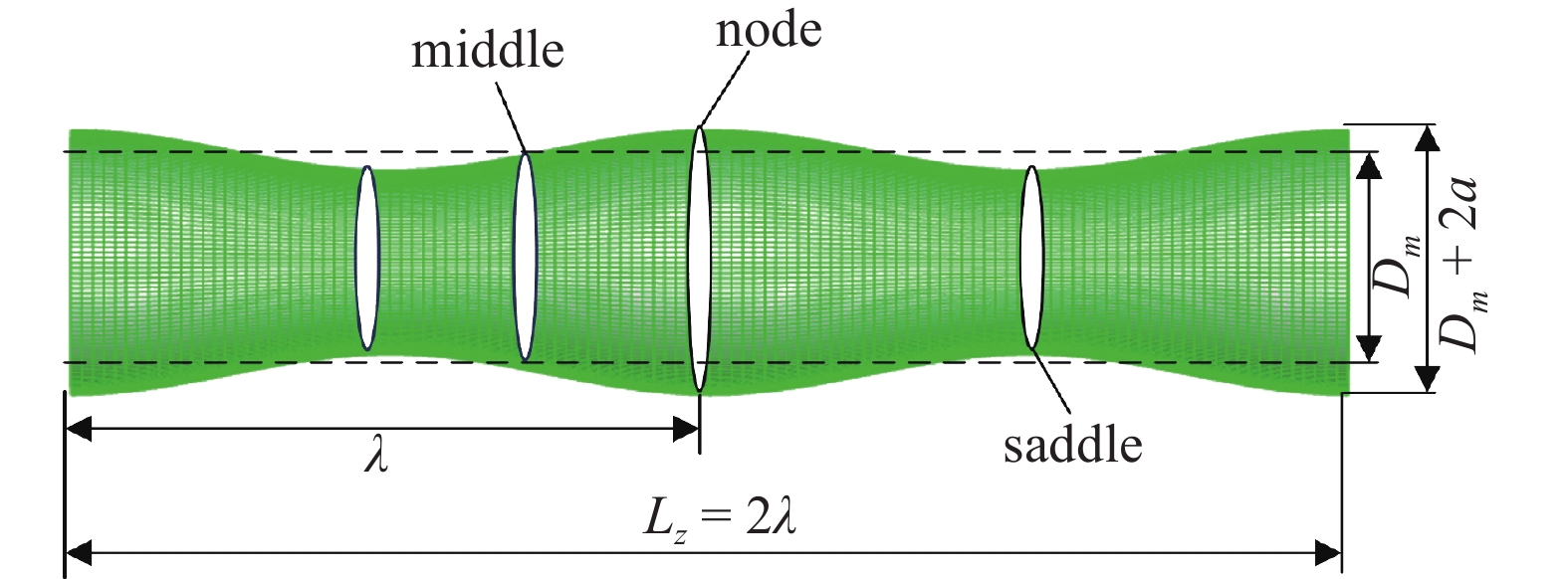
 下载:
下载:

